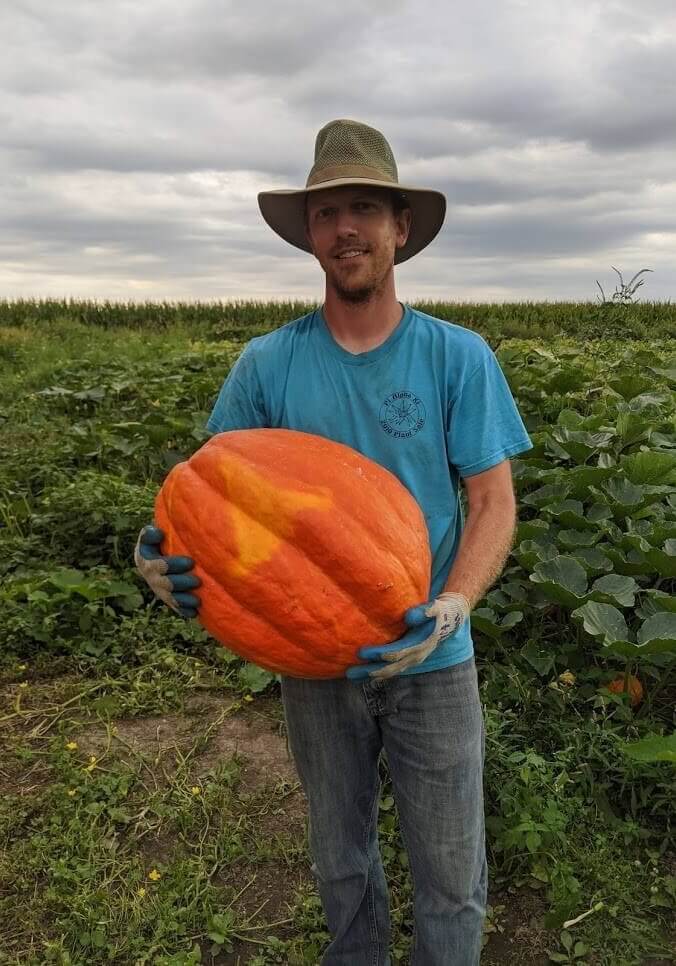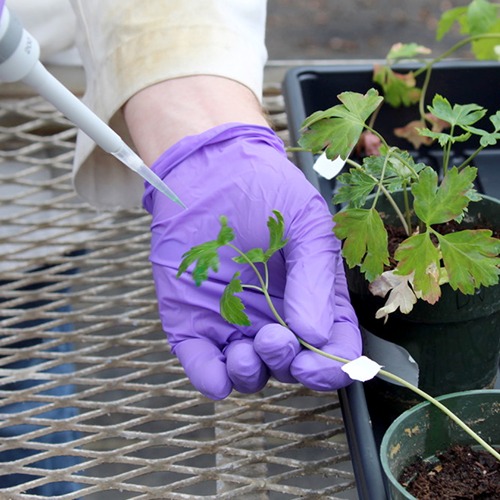With horticulture degrees from Purdue, assistant professor of weed science Stephen Meyers and his wife Jess were ahead of the curve – or ahead of the carve – when it came to growing pumpkins.
Meyers has always been interested in horticulture, professionally and personally. When the couple recently moved back to Indiana, they decided to use some of their land to grow and sell pumpkins, which afforded Meyers a deeper appreciation for some of the gourd’s temperamental tendencies.
Pumpkin yields vary widely year to year in Indiana and the Midwest, where roughly 90 percent of the country’s pumpkins are grown. In 2015, most of the crop was killed off, leaving a jack-o-lantern shaped hole on most porches at Halloween.
There are a couple reasons pumpkins prove more erratic than other crops, Meyers said. Rain and moisture can be a major issue, as it was during the great pumpkin shortages of 2015, and 2009 before that.
“There are a lot of pathogens that pumpkins are susceptible to and they spread more easily and are more problematic in wet weather,” Meyers explained. “One of the ways to help combat this is to plant a cereal rye cover crop in the fall before planting pumpkins the following summer. This puts a barrier between pumpkins and the soil.”
Of course, pathogens spread even without excessive moisture and pumpkin diseases have been known to take out crops even during drier seasons.

Insects can also hinder a healthy pumpkin yield. Squash bugs (Anasa tristis) feed on plant sap and, while doing so, inject toxins into stems and leaves, which lead to damage or death. These bugs are also vectors for the cucurbit yellow vine disease bacterium, which is a rapid and deadly plant disease.
But, despite the many pathogens and pitfalls open to pumpkins, preventative measures can be taken.
“In addition to planting cover crops in between seasons, we can use disease-resistant cultivars, rotate our crops, and apply plant protectants when needed, which helps keep the plants healthy. It’s also important to allow pumpkins room to ramble.” For Meyers that means each plant gets 18 to 32 square feet of field space. “A successful pumpkin crop requires proper management and help from Mother Nature.”
This year brings good news for pumpkins and pumpkin enthusiasts: the pumpkin crop is strong throughout the state. Meyers adds, “It’s great to see our pumpkins bring a little joy to children and grown-ups alike. The simple act of picking out a pumpkin brings a sense of normalcy, something much needed in 2020.”





